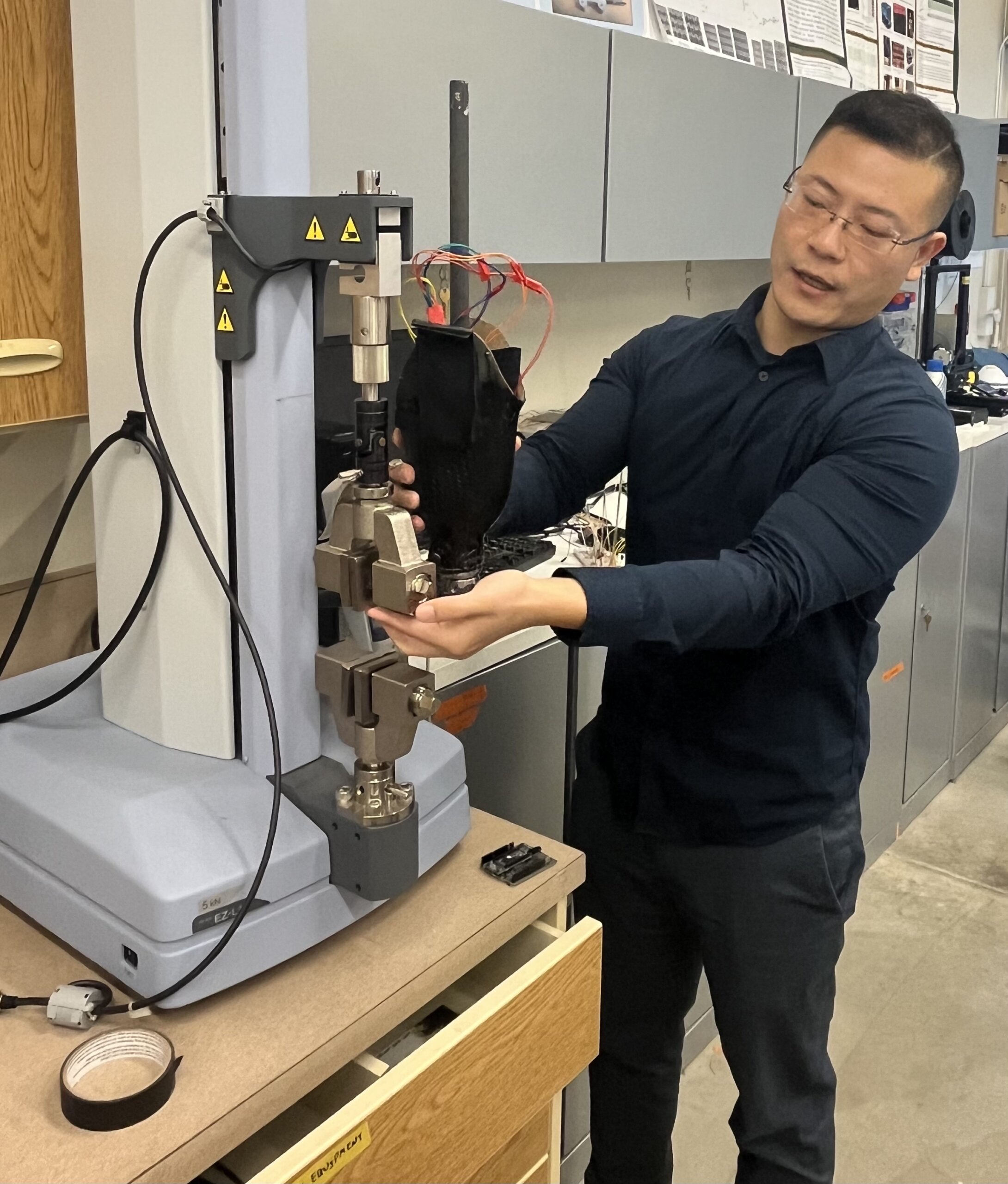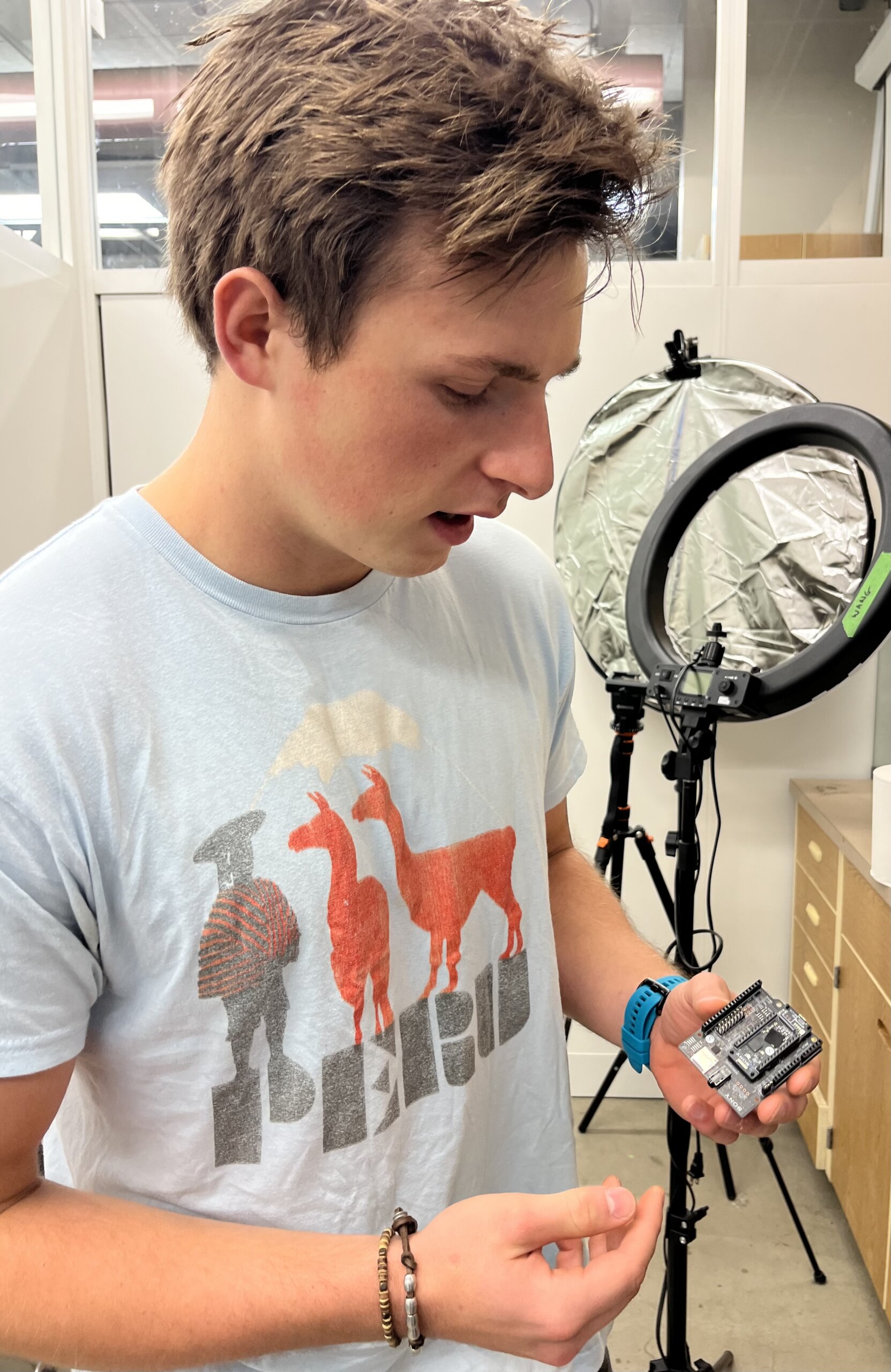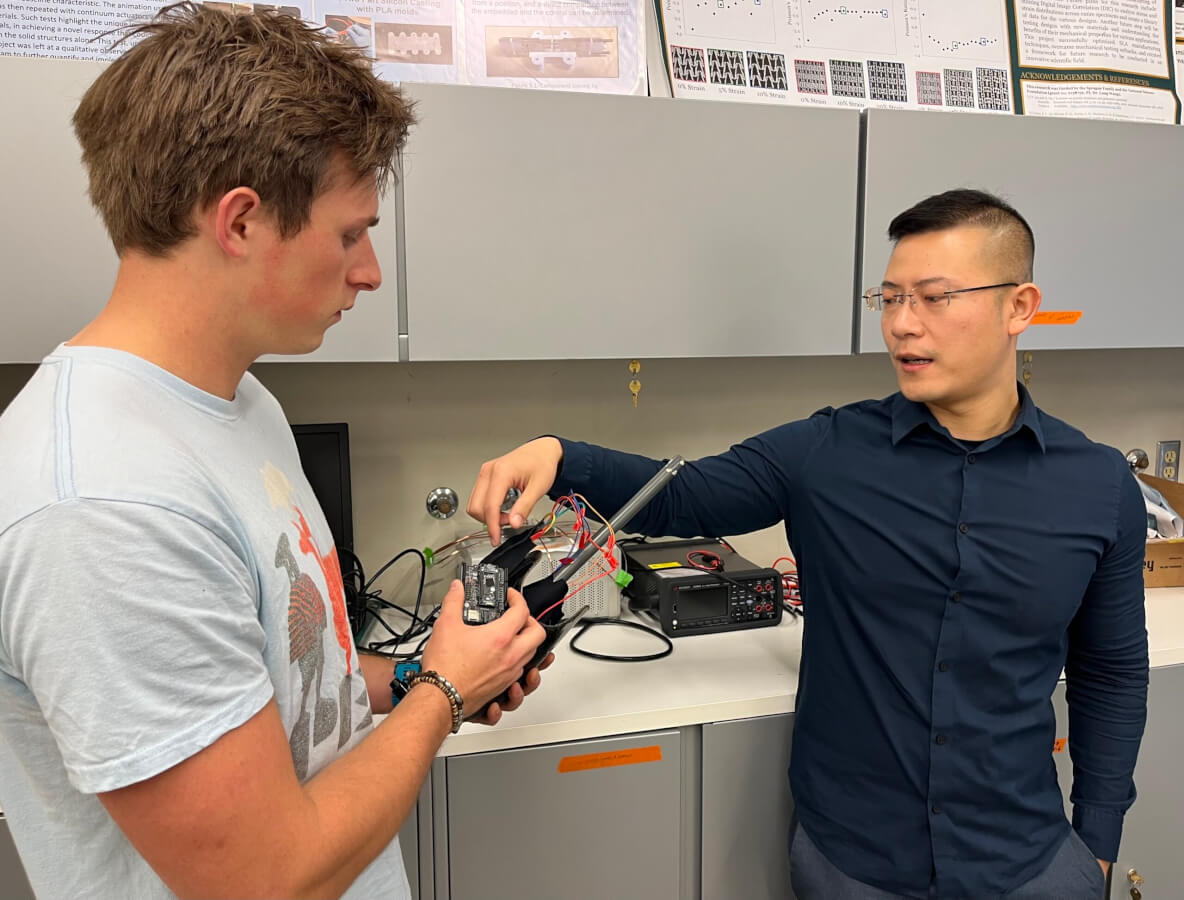Cal Poly structural engineering Professor Long Wang has embarked on a groundbreaking project in collaboration with Sony’s Semiconductor Solutions Group, aiming to revolutionize the fit of prosthetics for amputees.
Leveraging his expertise in sensing technologies, Wang’s proposal was recently accepted into Sony’s Sensing Solution University Collaboration Program. This initiative seeks to foster innovative research partnerships between Sony and academia, focusing on advancing sensing solutions.
Addressing the critical issues of discomfort and potential injury that amputees often face with ill-fitting prosthetics, Wang and his interdisciplinary student team are at the forefront of developing a solution. Their project focuses on creating an innovative and cost-effective wearable sensor system that aims to monitor the pressure exerted between the limb and prosthetic socket in real time. Such immediate feedback allows for quick adjustments, significantly enhancing comfort for the wearer.
By minimizing the risk of tissue damage, the initiative promises not just to improve the functionality of prosthetics but also to elevate the quality of life for amputees, making daily activities more comfortable and less hazardous.

“If everything goes right, this technology could be one of the wearable sensing systems for amputees,” Wang said.
The system will incorporate Sony’s Spresense electronic board and other sensors for seamless operation. After gathering data through laboratory trials, the board will process the information, paving the way for users to receive updates on their prosthetic fit potentially through a smartphone app.
“One of the exciting aspects is the societal impact, as this device could benefit so many amputees by enhancing their quality of life. This work has the potential to make a real difference,” Wang said.
Wang has worked with sensing prosthetics since his days as a graduate student, so he jumped at the chance to partner with Sony on the project that kicked off in November 2023.
“Their technology was built to support edge computing,” said Wang, referring to the method that processes data near where it’s being generated, instead of sending it to data centers or clouds.
Sony’s Spresense boards, integrated with wearable sensors, will measure the pressure exerted by residual limbs against the prosthetic socket, enabling users to make informed decisions regarding the fit of their prosthetics.
Wang explained that injuries often result from long-term use of improperly fitted or poorly designed prosthetics, creating high-pressure points that can cause pressure ulcers.
“It’s a frequent and almost unavoidable issue for amputees, leading to difficult-to-heal wounds that often cause significant pain,” he said.
Wang compares the experience to first-time skiers wearing ski boots, noting, “New amputees aren’t familiar with how prosthetics should fit. Much like when you first try on ski or snowboard boots, you’re unsure how much discomfort is normal. It’s about learning to adjust to a new device.”
An alert would issue a warning to the user, prompting them to adjust their prosthetic or consult their doctor for guidance.
“Currently, we lack real-time sensing solutions, which this technology aims to provide,” Wang said.
Given the project’s complex requirements, Wang assembled an interdisciplinary team that includes two students from biomedical engineering, two from computer science and one from computer engineering.

Max Lewter, who is working toward his blended master’s in biomedical engineering, is assisting Wang in leading the team through Phase 1 of their one-year contract with Sony.
“I was excited by the prospect of tackling a complex problem with the potential to aid people,” said Lewter, reflecting on his role as the software lead for the Lower-Limb Exoskeleton Assist Project (LLEAP) last school year. “With engineering, we have the capability to solve this problem.”
Lewter has concentrated on configuring circuits to integrate with Sony’s microcontroller – a tiny board with a ton of computing power.
“Our goal is to reach a stage where our primary focus is on deploying machine-learning algorithms on the board,” said Lewter, who has a minor in computer science. “That aspect is where my deepest interest lies.”
Lewter and his team have a clear roadmap ahead, which includes mechanical testing, collecting data through circuits, designing and fabricating the circuits and coding the algorithm.
The computationally complex nature of the work poses challenges, yet it has offered Lewter the opportunity to enhance his skills and delve deeper into the workings of algorithms.
Lewter’s primary motivation is driven by the project’s goal to extend health-care access to underserved populations. Ultimately, this effort will enable amputees to independently manage adjustments to their prosthetics, significantly benefiting those without regular access to clinical services.
“Expanding medical care is a crucial field, and I’m hopeful we can make it happen,” Lewter said.
Phase 1 of the project is scheduled to conclude in October 2024, yet Wang is optimistic about sustaining what promises to be a productive partnership with Sony.
By Emily Slater


